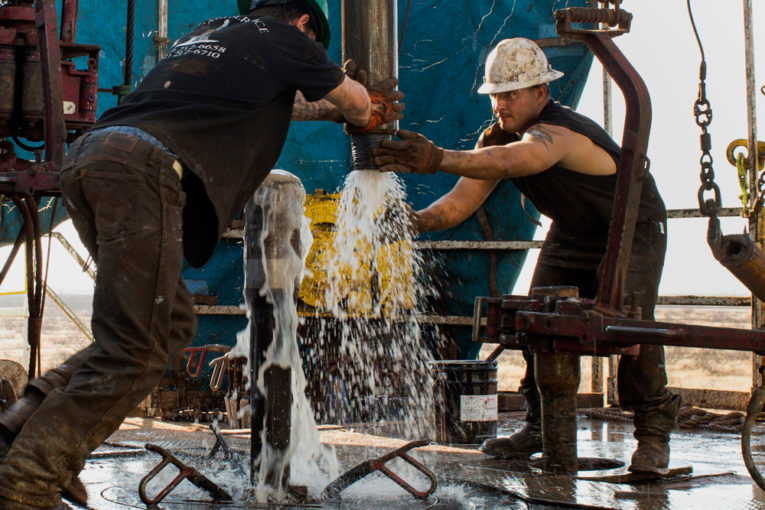
Oil prices are rallying, but instead of reaping the benefits Canadian oil and gas producers are stuck on the sidelines while their American counterparts are riding them with all they’ve got.
Indeed, a tale of two oil and gas sectors is emerging. On the Canadian side, the mood is subdued, budgets for 2018 are flat relative to last year, and job creation has taken a back seat to automation.
The Canadian sector is held back by pipeline bottlenecks that are depressing both oil and gas prices (WTI rose near US$64 a barrel Thursday, while Western Canadian Select was trading just above US$37), governments that are more concerned about transitioning to renewable energy, investors who’ve moved on to better and faster opportunities elsewhere.
On the U.S. side, optimism is strong, thanks to the U.S. industry’s success in producing shale gas and tight oil and in crushing barriers to export the new production globally, plus support from a president whose only concern about fossil fuels is that there should be more.
Jack Gerard, president of the American Petroleum Institute (API), reflected the U.S. industry’s buoyancy in his annual state of the industry address this week.
“We have taken the nation from energy scarcity to energy abundance, from making products abroad to a rebirth of U.S. manufacturing,” he said in Washington Tuesday. “From energy as a major pocketbook issue to lower gasoline, diesel, electricity and home heating costs. And today we are increasing development as we’re contributing to lower greenhouse gas emissions – a reality many believed was implausible, if not impossible.”
Gerard credited industry innovation and technological breakthroughs for his country’s ascent to the world’s largest producer of natural gas, oil and refined products. This year, the U.S. is expected to produce more than 10 million barrels a day, elevating itself to the status of one of the world’s largest oil producers alongside Saudi Arabia and Russia.
Meanwhile, the API says U.S. economy-wide CO2 emissions are near 25-year lows, and for the past 10 years energy-related carbon dioxide emissions have fallen in 43 states.
The API is also optimistic about the sector’s employment prospects. As many as 1.9 million new jobs are projected in the oil and natural gas and petrochemical industries by 2035, Gerard said.
“Women and minorities, including African American and Hispanic workers, will fill nearly 40 per cent of those positions. And the contribution of millennials, who make up one-third of the oil and natural gas industry’s workforce today, are projected to grow.”
The API welcomed a plan to open new offshore areas for exploration, which it says is an acknowledgement of the industry’s advancements in technology to safely access resources, as well as tax reforms that “will allow the natural gas and oil industry to continue building in the millions of jobs we support and billions we invest into the U.S. economy every year.”
In contrast, Canada’s oil and gas sector is looking forward to another year of uncertainty, low prices and increasing tax burdens.
The coming big-ticket items are a tanker ban off the Canadian West Coast, reforms of federal regulatory reviews of major projects, tougher methane emissions regulations, and national carbon pricing.
That’s in addition to upheaval from continuing lack of energy export infrastructure – oil and gas pipelines and LNG terminals.
“Canadian oil prices have completely de-coupled from global benchmarks – with the current strip implying the widest heavy differential in about three years at US$20 a barrel in 2018,” Peters & Co. analysts say in a recent outlook report.
And there isn’t a quick fix. Canadian oil supplies, which are growing with the completion of big oilsands projects will match pipeline capacity this year and next, Peters said. Of the three pipelines at various stages of approval, only Enbridge’s Line 3 replacement has a high probability of being in service by 2020, according to Peters, while due to continuing delays both Keystone XL and the Trans Mountain expansion are anticipating in service dates after 2020.
The story is even bleaker on the gas side, where pipelines are full now and export capacity not available until a liquefied gas industry takes off.
The upshot is that capital spending in Canada is expected to stay flat at $51 billion this year in Canada, though oilsands spending will decrease by $2.8 billion to $13.6 billion, or about 60 per cent less than before oil prices crashed in 2014, and spending on the conventional side increasing to $37.5 billion, up $2.4 billion.
Meanwhile, the Alberta government is expected to collect a staggering sum in carbon payments from the oilsands alone – more than $1.1 billion by 2025, from $300 million in 2017.
The U.S. Permian basin, where there are no such payments, is the new hot spot. Spending is expected to increase to about US$40-US$45-billion this year, from US$35-billion in 2017, Peters said.
Here’s the kicker: by growing, the U.S. oil and gas industry is achieving similar objectives as Canadian governments that are restraining Canadian oil and gas – lower GHG emissions, economic growth and job creation, market diversification and greater innovation.
You can read more of the news on source
